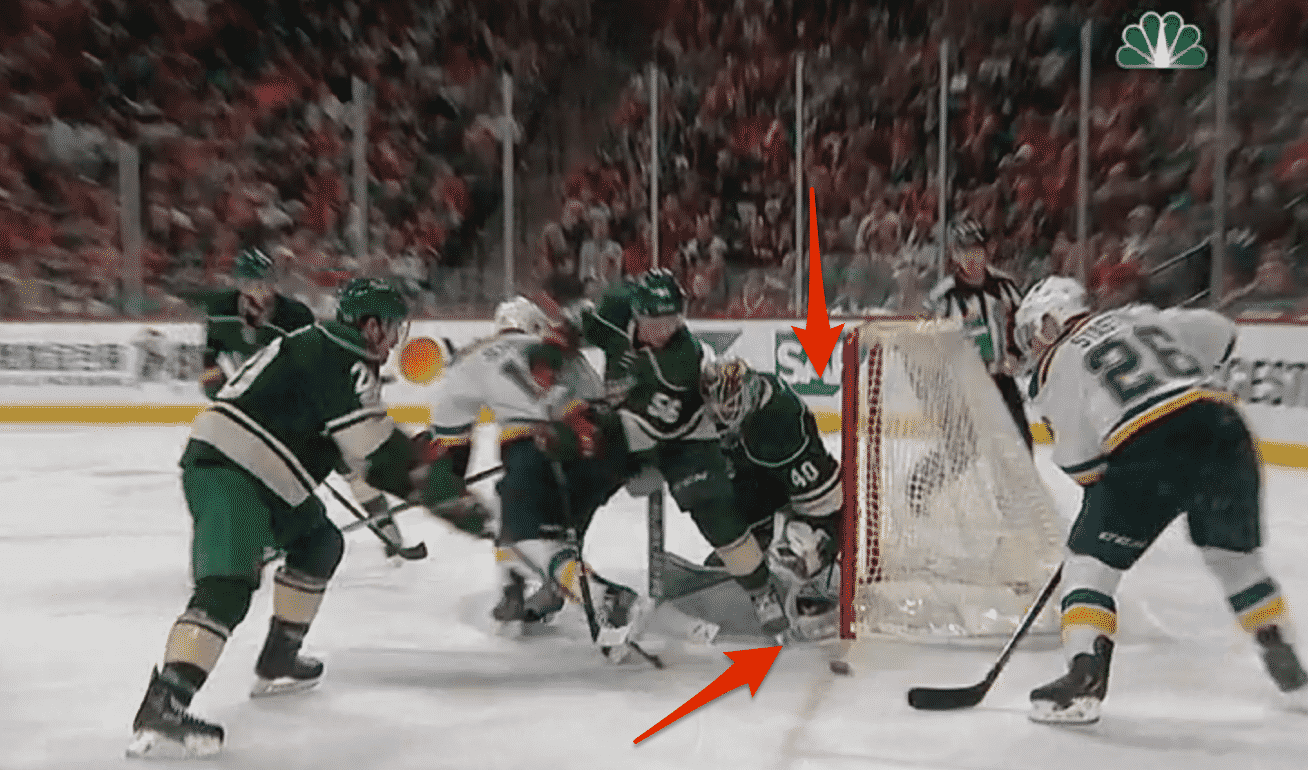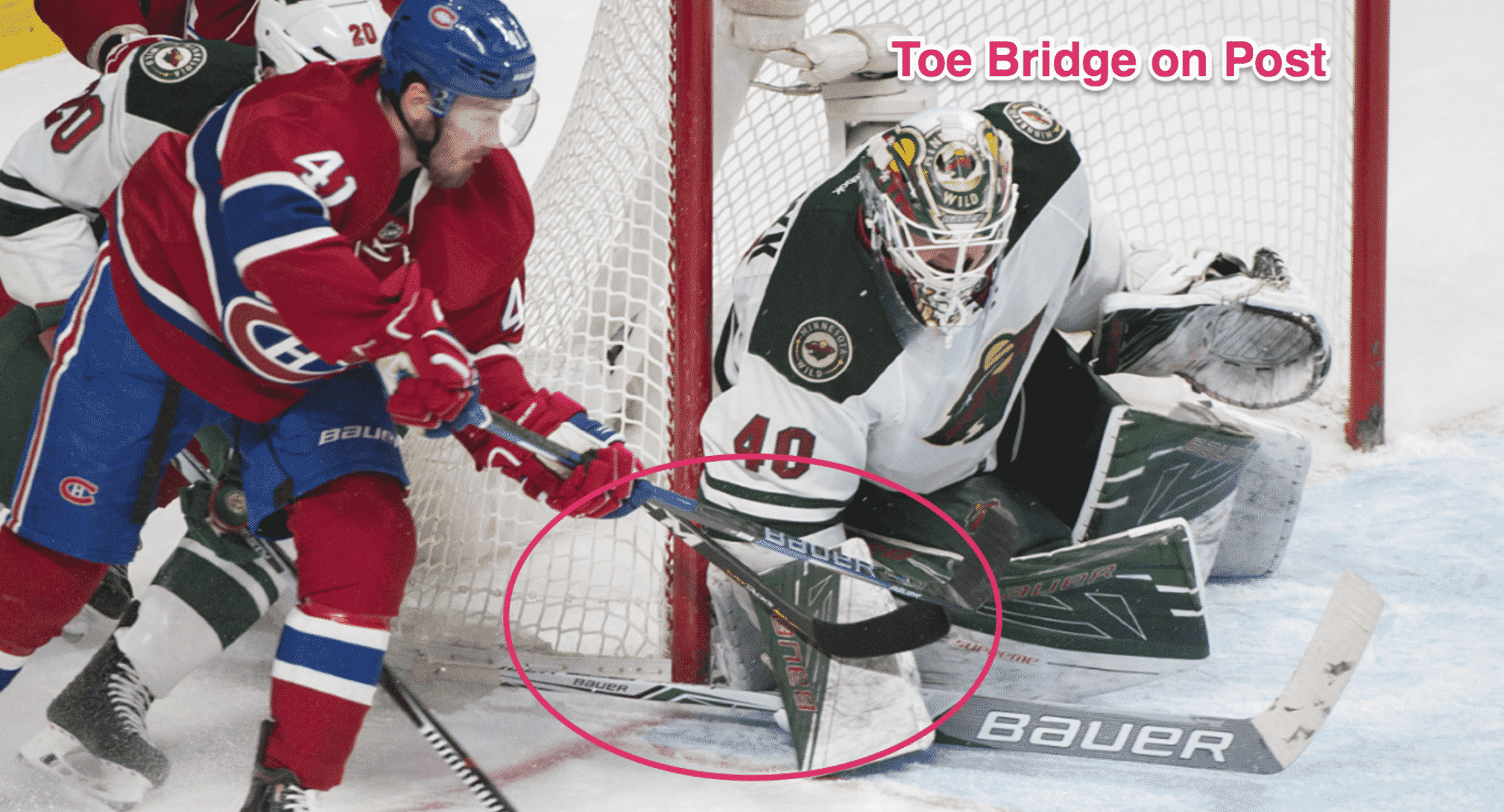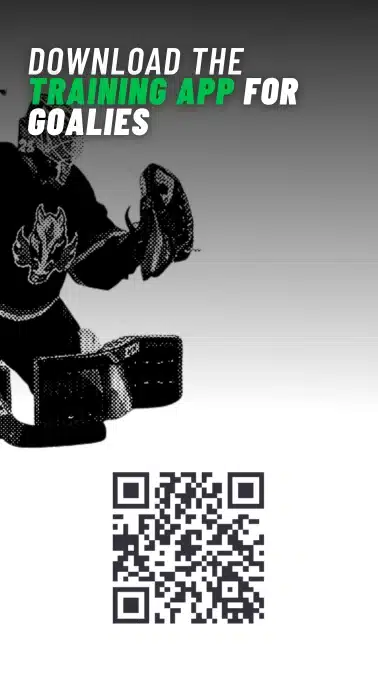First, you can watch the goal above.
The Minnesota Wild were eliminated from the playoffs during this game, this goal ultimately on the way to sealing their fate (to go down 3-1.. they did force overtime but lost)
So, it begs the question: when a goaltender is in the RVH, how should they position their skate/toe on the post?
The answer might seem obvious: whatever gives you the best seal.
Right?
First, let’s take a look at a couple clips of Dubnyk getting stuck with his blade on the post. This didn’t actually cause the goal (puck went in near his upper body), but I believe that his lower body being 2+” out from the post made a difference in his seal–which put the puck in the net.
Dubnyk is certainly tall enough to seal off almost the entire post when he positions his body as such, so it’s unfortunate that such a simple mistake turns out to be a pivotal moment in the series.

The image above is right before Stastny attempts the first shot. Dubnyk makes the initial save, however on the second shot Stastny gets a bit of elevation and the puck ends up right where we do NOT want it.
Also worth pointing out, there are 3 Blues threats (red circles), none of which are in the slot (green box).
Regardless, this is a save that needs to happen. Let’s look at another angle.

Dubnyk actually starts the play quite well. The pass happens almost immediately after this–and Stastny takes his shot almost immediately (facing very little pressure from Suter).
The point where Dubnyk misses, which cost the Wild the goal, is, in my opinion, his toe positioning when he drops in to the RVH.

This shot comes from after the initial rebound. Stastny just grabs the puck and puts it on to Dubnyks pad, it bounces back and he actually gets the second shot off from on/just below the goal line.
The point we’re trying to look at here is the red arrow near the bottom of the image.
Look at Dubnyk’s skate positioning on the post. By his blade touching the post, not only does he offer a huge hole next to his pad, but his upper body/pants area is 4+ inches from the post.
Had he started this play with his toe right to the post (like the image below).. would it have turned out differently?

A couple points, however.
- This play happens SO fast, you can hardly blame Dubnyk for not perfectly positioning his skate on the post. It’s the NHL, after all.
- Facing the threat of the shot, I’d rather have my goaltender in position for the FIRST threat on the ice, if he can’t be well positioned for both. In the image where we see Suter in the pathway to the net, he is dangerously screening Dubnyk in what could just as easily have resulted in a goal–but I think he plays this fairly well considering all Blues threats are crashing the net.
So, how can we work on our skate positioning in the RVH?
It’s pretty simple, actually. Get in to the RVH, feel a couple different positions out. Skate on the post, toe bridge on the post, or maybe even Rask style with his toe completely inside the post.
Find something that works for you, start reading threats in your defensive zone–and give your defense the best possible chance for success by learning to make proper save selection and avoid potential mishaps like this.
If you have read this far..
You’re obviously committed to improving as a goaltender. We’re always working on ways to help you improve, you can sign up for a free look inside a Private Lesson with Rob Liddell (goalie coach for Tyler Parsons, 2017 WJC Champ, Memorial Cup Champ).. here. It includes a free download of a private lesson plan plus the drills to go with it.
Or you can always..
Subscribe to Goalie Coaches on YouTube (worth it) or get tons of drills on Instagram..







